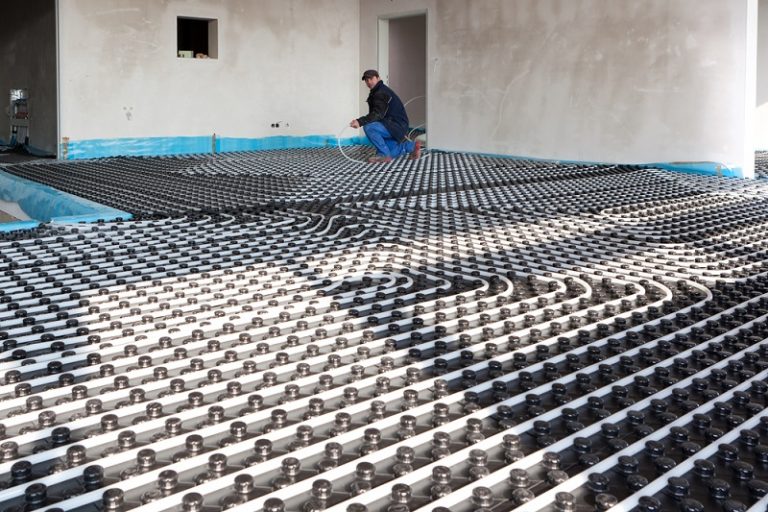Hydronic floor heating is a type of radiant floor heating that uses water as the medium for heat exchange. The process uses pipes to distribute warm water throughout an entire building and to heat each room using an electric pump. The heated water, by contrast, acts as a natural heat exchanger for the building.
A hydronic heating system, also known as radiant heating, relies on water or other liquids to heat your home. These systems constitute a heat source and a network of tubes that transport the heated fluid to other parts of your home.
This post is about hydronic floor heating. In this blog article, we will give you details about various aspects related to the functioning process of hydronic floor heating systems.
Here are a few major functions of Hydronic Floor Heating:
- Heating, to increase the temperature of your room and keep you warm in cold weather
- Cooling, for cooling down a room temperature during summer – Dehumidification, for reducing humidity levels within a room.
- Ventilation is for increasing the airflow through a room to improve air quality.
As you can see, there are many functions of this floor heating system. Therefore, it is important to use it in rooms that are most likely to have people using them. These include the kitchen and bathroom, where humidity levels can sometimes be a problem.
The heating tank gives most hydronic floor heating units their peculiar look. The tank is a large open steel cylinder that serves as both a reservoir for heated water and as an additional heating element.

The functions of a Hydronic Floor Heating System are as follows:
- Heat exchange: The main function of hydronic floor heating is to transfer heat from the warm water to the cooler room. In order to increase efficiency, it is important to reduce as much heat as possible before it enters the room through the floor.
- Heat storage and recovery: Storage has two purposes in a hydronic system. The first is a safety feature: if there is not enough hot water. Heat can be drawn from storage if there is any available from the primary water heater.
- Heat regulation: The purpose of the mixing valve is to control the temperature in the room. Together with before, it enters the room.
- Temperature regulation: The temperature of the outgoing water entering a hydronic heater. Is regulated with a constant-pressure valve
- Timer control: In larger systems, timers can be used to ensure that a pump only runs. For a specified amount of time, which prevents overheating in the pump and ensures even heat distribution
- Humidification: When it is used in conjunction with a humidity sensor, a hydronic heating system may be. Set up to provide warm air at a specific temperature and relative humidity.
- Comfort control: Most modern comfort controls are designed to operate with a thermostat. This can also be used in hydronic heating systems. Though it is less common.
- Energy savings: In larger systems, the pump can automatically change cycles or run for longer periods of time to ensure that hot water is always available in the tank
Last but not the least, a hydronic floor heating system may be one of two types: radiant or fan-forced systems. The main difference between these two types is the way heat spreads throughout. Radiant systems often use reheat coils while fan-forced systems do not. In hydronic heating systems, the heat source is either electric or gas. Yet may likewise be petroleum gas.
Conclusion
The aforementioned points will help you understand hydronic floor heating systems and you can choose the best suitable tool for comfort and safety.

